Tag: become a home renovation technician
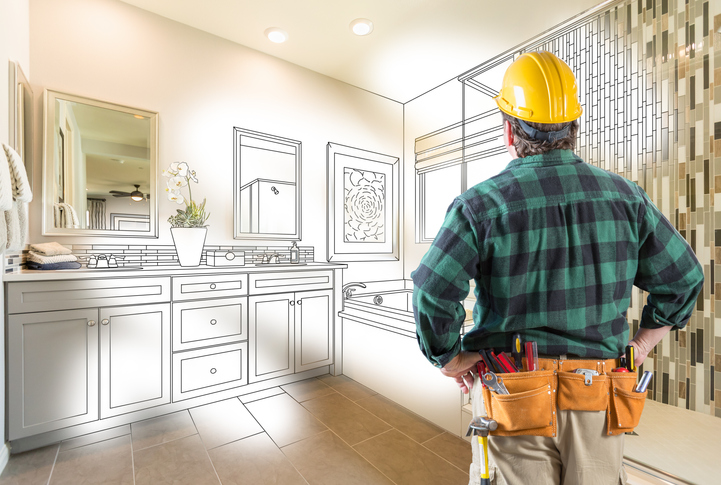
As a home renovation technician, you’ll be responsible for taking homes to the next level by handling a variety of projects, including painting, carpentry, plumbing and more. Whether it’s your own home or you’re completing a project for a client, it will be important to stock up on the proper tools to get the job done right.
Home renovation can be tricky at times. By equipping yourself with the tools you need, you’ll be able to successfully complete any project while keeping in line with building codes and safety regulations. In addition to safety gear such as a hard hat, safety glasses, respirator, and gloves, you’ll need at least five different types of tools including electrical tools, hand tools, carpentry tools, plumbing tools, and painting tools. Below, discover more details about each of these tool types!
1. You’ll Need an Assortment of Hand Tools
After completing your home renovation training, it will be important to carry a few different hand tools at all times. First, you’ll want a tape measure to ensure that you’re working with the right dimensions. You’ll also want a screwdriver (preferably a multi-bit one), and a variety of screws to go along with it. Additionally, it’s important to carry a few different hammers with you at all times. A carpenter’s hammer is convenient when it comes to woodworking projects, and a sledgehammer is essential when completing the demolition stage. Lastly, you’ll want to have some pliers on hand, as these will help you to fix and place wires and other smaller objects.
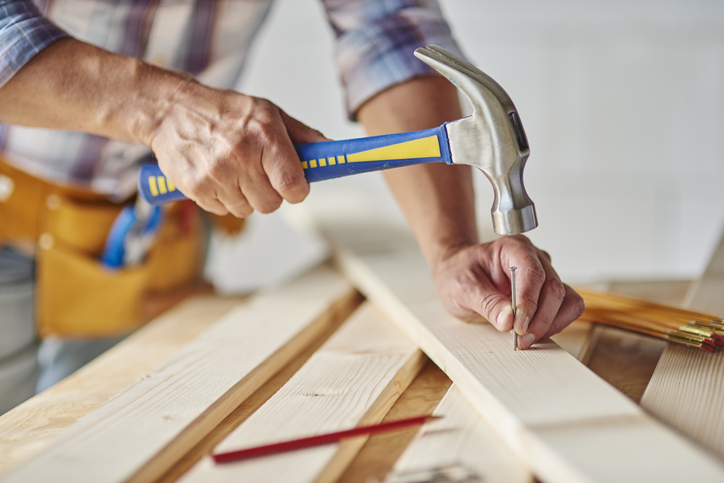
2. Carpentry Tools Will Help You Cut and Frame
When conducting carpentry projects, there are a few different tools that will enable you to complete the job in a clean and efficient manner. During your career, it will be beneficial to have a saw on hand at all times. In addition to a handsaw, consider investing in a motorized circular saw–as this will speed up the wood cutting process. Saw horses are also essential tools when it comes to staying safe while cutting plywood or lumber. If you’re working on a framing project, you might want to bring along a rafter square, as this will help you to determine the right layout. Finally, it will be impossible to know whether you’re cutting or fitting two pieces together without a level–so be sure to always have one on hand!
3. Plumbing Tools Are Helpful to Have on the Job
Once you become a home renovation technician you’ll probably have to navigate a few plumbing projects–especially when working on a home’s kitchen or bathroom. In order to successfully complete any plumbing job, you’ll want to have a: pipe cutter, sandpaper, and propane torch in your tool box. A pipe cutter will enable you to work with different pipes and shape them to the right size, while both sandpaper and propane torch are used to make new connections between pipes. In the case of leaks, it’s also helpful to carry some duct tape with you–as this can be used to quickly and safely seal any holes to prevent water damage from occurring.

4. Those in Home Renovation Training Can Expect to Use Electrical Tools
Every home renovation technician needs a few different electrical tools. The most important electric tool to have on hand is a cordless drill. This will help you to avoid the pain of using an extension cord when drilling needs come up on various projects. Additionally, if you’re working with wires, using a circuit tester allows you to ensure that no wires are live. This lets you quickly ascertain safely before moving forward with a project.
5. Finish the Job Up with Painting Tools
Painting is typically the last step in the home renovation process. While you don’t need too many heavy duty tools to give a surface a fresh coat of paint, there are a few handy tools that will make your life easier. First, you’ll want an assortment of tarps to put on the ground to catch any drops of paint that fall. You’ll want a sanding block to smooth out smaller surface areas. If you want to ensure a quality paint job, it’s also important to carry a set of high-quality rollers and paint brushes. One final tip: when it comes to painting corners and tight spaces, having a short-handled brush and an angled brush on hand is always useful.
Now you know what key tools you’ll need to have on hand to succeed as a home renovation technician. Depending on the project, you may want to carry some or all of these tools with you at all times!
Ready to enroll in home renovation technician school?
Launch your career with a program at the North American Trade Schools.

While businesses across Canada have felt the effects of the COVID-19 pandemic, one industry has bounced back faster than expected. The home renovation industry has been surging over the past year, with the main driver of this boom being the pandemic itself. With Canadians forced to spend more time at home due to travel restrictions and lockdown orders, they’ve had the opportunity to focus on what might be improved within their homes.
If you’re considering a career as a home renovation technician, your skills will be in demand in the coming years as Canadians continue to invest in home renovation projects. Read on to discover more about the trends dominating Canada’s home renovation industry, and the impact that this growth may have on your future career.
Professionals with Home Renovation Training Have Been in Demand Since the Pandemic
Even before the pandemic hit, home renovations were hitting record highs across Canada. With the initial arrival of COVID-19, many home renovation projects were put on pause as Canadians cut their spending in anticipation of an economic downturn. However, as the months dragged on, more and more Canadians either opted to move ahead with their renovations or decided to begin new projects that they hadn’t considered prior to the pandemic.
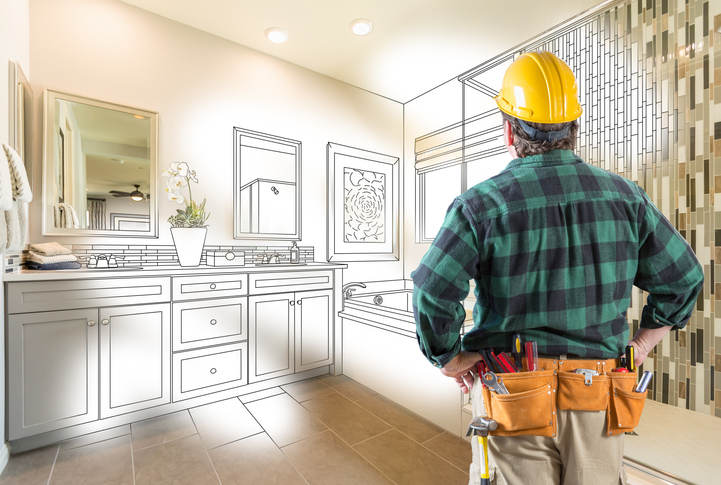
If you want to become a home renovation technician, it’s important to note that about one in two Canadians are either planning to or have already completed a home renovation during the pandemic. Today, the home renovation industry is experiencing a major resurgence, and the prolonged uncertainty surrounding the pandemic has only made growth in this industry more certain.
Why Canadians Want to Begin their Renovations Now
The COVID-19 pandemic imposed more restrictions on the free movement of Canadians than ever before. Many professionals found themselves working from home, their children attending school online, and their vacations cancelled. However, for those with home renovation training, these new obstacles provide more opportunities for revenue.
Homeowners are placing increasing importance on creating a home that they want to spend more time in–whether that means upgrading their home office, putting in a new patio, or adding an extra wing to their home for recreation. In fact, 80% of Canadians cited comfort as the main reason for undergoing a home renovation. Canadians want their homes to be as livable as possible, and with the extra time that the pandemic has afforded them, they’re able to sit down and think about the renovations they want to invest in.

The Benefits of Home Renovations
While the pandemic placed greater value on the home space, this isn’t the only reason that Canadians are investing in home renovations. Many are also looking to make home improvements as a means to increase their property values. More and more Canadians are investing in real estate due to the current affordability of the market, and many see home renovations as a great way to increase the value of their homes while real estate is cheaper. With a home upgrade, property owners are sure to see greater profits in the future, making home renovations more valuable than ever before. If you’re considering getting into the home renovation business, the time has never been better to begin your training!
Looking for the right home renovation school?
North American Trade Schools has the program for you!
An Intro to Staircase Installation for Students in Home Renovation Technician School
April 22, 2021
Staircases serve an important function in any home with more than just one floor. Stairs are necessary for moving from one level of the home to another, and they’re often heavily trafficked as a result. When renovating a house, there are many important factors to take into consideration before installing a staircase. Designs can take a variety of shapes and sizes, and there are advantages and disadvantages to the different types of staircases, as well as the materials used. If you’re interested in a career as a home renovation technician, read on to discover what you’ll need to know before installing a staircase.
Useful Staircase Terminology for those with Home Renovation Training to Know
There are a few different terms that are useful to know if you’re embarking on a staircase installation project. First, a riser refers to the section between two stairs. A riser’s height is typically in between 5 and 8 inches. A tread is the term used to describe the horizontal section of a staircase where a person steps—the width of which can vary, depending on the user’s preferences. Headroom refers to the space between a stair and the ceiling above. Building codes will dictate the requirements for the headroom’s height, but it’s usually around 6’8”.

The stringer supports the treads and risers. Finally, the handrail—also known as the railing—is the beam that runs parallel to the staircase to provide balance for those using the stairs. Together, all of these components make up the staircase. If you’re in home renovation technician school, read on to discover how these components can be used in different ways to create a variety of staircase types.
An Overview of Staircase Types
The simplest type of staircase to construct is a straight stairs design. These stairs only need to be connected at the top and the bottom, without requiring additional support in the middle. If there are less than 16 risers, it’s also not necessary to install a landing along with the stairs— making construction relatively straightforward. Another common type of staircase is an L-shaped staircase. Within an L-shaped staircase, a landing marks a change in direction between two sets of stairs, often creating a 90 degree angle. L-shaped stairs are great for installation in the corners of a room, but the work to build them can often be more strenuous for home renovation pros.

Although spiral stairs are less conventional, those with home renovation training may be required to install this type of design at some point in their career. Spiral stairs are more compact, and consist of treads attached to a central pole, radiating out in a helical arc. While these stairs require more careful attention from users when ascending or descending, their interesting design makes them a great option for a modern home.
Use These Materials When Constructing Staircases
When selecting the material you’ll use for a staircase, it’s important to keep in mind: how much the stairs will be used, who will be using the stairs, and what kind of aesthetic you’re going for. Wood is a popular option for use in a staircase. While it’s trickier to install, it can be a great option for high-traffic areas as it’s often more durable. If strength and durability is the goal, concrete or natural stone can be used to construct a staircase—although these materials are most often reserved for staircases on the exterior of the home. Lastly, steel or metal can also be used in the construction of staircases, as these materials are both lightweight and low maintenance.
Want to become a home renovation technician?
Launch your career with the North American Trade Schools today!
Taking Home Renovation Training? Here’s How to Handle Mold Discovered on a Reno
February 02, 2021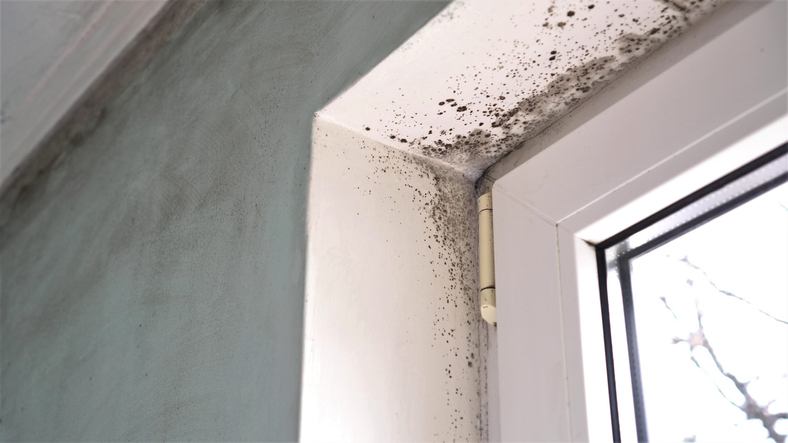
During a home renovation project, it’s not uncommon to discover a few “fun” surprises. Ripping up a floor or tearing down a wall is not only an opportunity to give a home a new look—it’s also a chance to make sure there’s no mold hidden out of sight and causing harm.
When mold is discovered, it’s important to address it right away. Left untreated, mold can become a serious health hazard to those who have it in their homes. In fact, it’s known for causing respiratory problems, immune disorders, allergies, and more. If you’re interested in becoming a home renovation technician, here are some tips on identifying and dealing with a mold situation, and how to prevent mold from occurring in the future.
If You Have Home Renovation Training, Here’s Where Mold Is Likely to Occur
Mold is most likely to grow in places where there is excess moisture. When renovating a home, make sure to check carefully for any leaks, condensation, or general moisture within the walls or floors, as these spots will be prone to mold growth. After your home renovation training, be sure to thoroughly examine a home for water damage or condensation during the renovation process, because where there’s moisture, there could be mold.
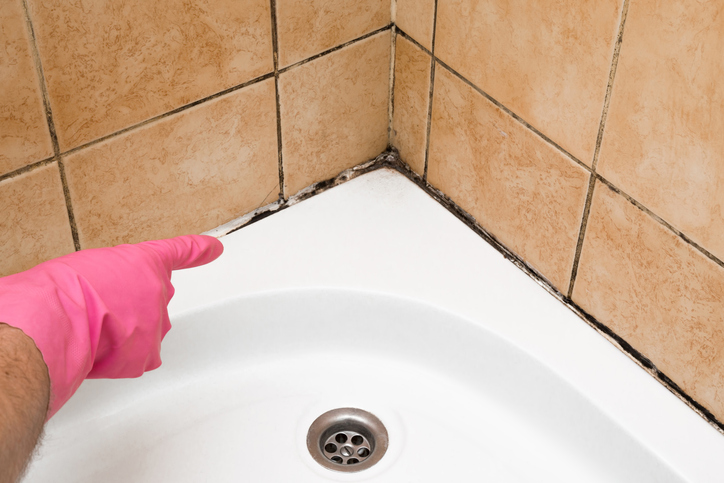
You Found Some Mold: Now What?
So you’ve discovered mold—what’s next? Whatever the quantity, mold should always be removed. While a little bit of mold might not pose a threat, there are certain types of mold that can be dangerous to our health, so it’s good practice to deal with mold as soon as it’s identified. Upon encountering mold, determine how much mold there is and what colour the mold is. If there are large spots of mold (bigger than your hand), the removal process may be more intense, and it might be best to call in a mold professional. Additionally, if the mold is black in colour, this could indicate the presence of black mold, which is toxic and should be removed by a professional remediation company.
Preventing Mold from Reappearing During Your Home Renovation Career
If you want to become a home renovation technician, remember that it’s a good idea to be prepared to encounter mold while on the job. Make sure to have protective equipment on hand, such as goggles, gloves, and an N-95 or P-100 respirator.
Of course, what’s even better than removing mold is preventing mold from occurring in the first place. Mold is sneaky, and preventing any possibility of re-growth is essential, especially while renovating a home. You wouldn’t want to put in a new floor over an area that has a chance of developing mold again. In order to remove the possibility of mold resurgence, make sure that the area is completely dry. A dehumidifier can be helpful here. Additionally, consider sealing off the area with a sealant such as shellac before continuing with the renovation, which will discourage mold growth.
Are you ready to enroll in home renovation technician school?
Explore the program options available at the North American Trade School today.
Common Bathroom Remodeling Mistakes: A Look For Those in Home Renovation Training
November 20, 2020
Remodeling a bathroom is a big endeavor in any home. Putting in a new bathroom can get expensive when taking into account the plumbing fixtures, ventilation, electrical wiring, and furnishings needed to create a quality space. If you’re remodeling a bathroom, it’s important to have a plan in place to ensure that the design is not only functional, but that the client will be satisfied with the result. When making renovation plans, be sure to be aware of these common mistakes so that you can both avoid a remodeling catastrophe and create a bathroom you’re proud of.
Those With Home Renovation Training Should Prioritize the Layout
When planning to remodel a bathroom, make sure you’re accounting for the many things that could affect the layout and function of the room. Failing to account for existing infrastructure, placing fixtures inefficiently, or making measuring mistakes can all lead to a bathroom remodel disaster. Plan ahead by figuring out where plumbing points will go and ensuring they work with the walls and features already in place. As those with home renovation training might know, moving these points can be expensive, and this will save both time and money.

Additionally, take the time to measure out the space for fixtures like bathtubs, vanities, toilets, and showers. Make sure that these fixtures have enough space between them to move around comfortably in the space, while still being able to clean between and around the fixtures. When measuring, consider the way that drawers will open, and make sure not to put the toilet in direct view of the opening door, because who wants to see that? Establishing a clear layout before beginning your remodeling project will help you to avoid unnecessary and hard-to-fix mistakes later in the process.
Don’t Skimp on Lighting
Lighting can make or break a bathroom. Too much overhead light can create shadowing, and lights that are too bright could work to make the bathroom less relaxing. Consider using multiple different lighting sources to create a layered design. Wall lights near the mirror make for optimal lighting when looking in the mirror, and LED strips are a good option for a softer light. If the lights are wired so that they can be turned on individually, everyone using the bathroom can be satisfied with the lighting by adjusting it to their liking.
Plan for Ventilation
If you’re in home renovation school, you’re probably aware that the bathroom requires more ventilation than most other rooms in a home. If the bathroom doesn’t have a window, a fan is required by code, but investing in a good vent is always a good idea. A fan will prevent condensation, damage to paint, and combat the growth of mold spores. Think about equipping the bathroom with a fan that has a timer switch to ensure that it’s being put to good use.
Mismatching Materials? Maybe Not
While it might be tempting to add splashes of colour to a bathroom by mixing and matching materials and textures, this will prevent the finished product from having a sophisticated, cohesive feel. Try to use a maximum of two different kinds of tiles, woods, or metals, and make sure to choose materials that are meant for a bathroom. Because of the temperature changes and higher than average moisture levels that bathrooms face, installing materials not made for the bathroom could lead to mildew or warping. By avoiding these mistakes, you’ll be ready to build a bathroom that’s both functional and appealing.

Do you want to become a home renovation technician?
Check out the North American Trade School’s program options.
3 Things Everyone in Home Renovation College Should Know About Home Remodeling for People with Disabilities
July 30, 2020
When someone has a disability and wants to live comfortably in their own home, it must be repurposed to accommodate their needs. Remodeling a home with accessibility in mind can be tricky, but there are ways it can be done. When prioritizing the needs of those with disabilities, you’ll need the right tools and an eye for design. Whether physical or cognitive, you can get creative with how you remodel homes and make a positive difference in their quality of life.
While different people will have different needs for improving their home’s accessibility, these are some general tips that can help guide you along with these types of projects. Here are three things you should know about home remodeling for people with disabilities.
Make Sure the House Is as Easy as Possible to Navigate
For any remodeling project with disability in mind, the top priority must be to ensure those living in the home can have optimal mobility within it. This means you must make it so that they can navigate all areas of the home with ease. For example, you can install a stair lift on flights of stairs, so that those with mobility difficulties can sit on the lift as it moves up and down. You’ll also want to make sure the home’s flooring is smooth and wheelchair-friendly, and that the kitchen is also re-designed for accessibility. Furthermore, make sure all doors in the home are wide enough for them to easily enter and exit (though this may be a time-intensive part of the project), and that doorknobs are low enough for those in a wheelchair to open them.

When You Become a Home Renovation Technician, Focus on the Outside Too
If you’re remodeling the home of someone with a disability after your home renovation technician training, keep in mind that the accessibility of both the interior and exterior of the home should be accounted for. Therefore, think about how outdoor areas such as the backyard can be remodeled, such as widening doorways. You can work on paths so they can be more friendly for those with reduced mobility, or you can try to make the ground more level so that those in a wheelchair can go outside without risk of falling. One of the easiest ways to make the exterior more accessible is to add ramps in the front and the back, so those living in the home can easily move in and out.

The Bathroom Is Also a High-Priority Area in the House, Especially for Safety
Perhaps one of the most crucial areas of the home to remodel is the bathroom, as not doing so can create safety hazards for the person living in it. After you become a home renovation technician, the most important parts of a bathroom to repurpose are: the doorways (to ensure they are wide enough for easy access), sinks and countertops (so that they’re low enough to be used by those in a wheelchair), bathtub (a roll-in or walk-in bath is likely your best bet) and the shower (installing a walk-in shower is ideal for safety and mobility reasons). Another feature you can add to the bathroom is grab bars, which improve accessibility for those living in the home, since they can grab onto them whenever necessary—for example, on the sides of the toilet.
Do you want to take courses at a home renovation college?
Contact North American Trade Schools for more information!
3 Exterior Finishes Students in Home Renovation Training Should Know
December 11, 2019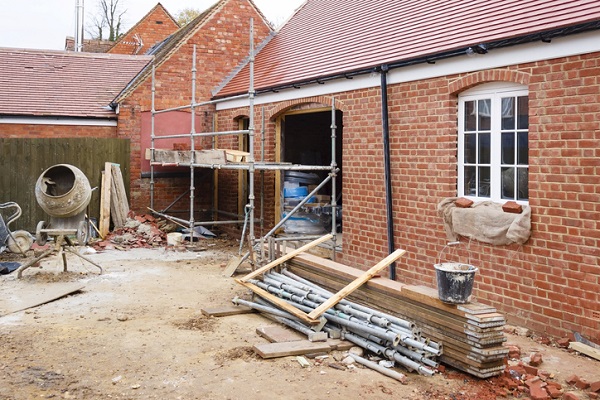
To protect a newly renovated home from rain, wind and other conditions, you’ll need the best exterior finish. Exterior finishes are materials that cover the outside of a building or a home. Different exterior finishes are better for different homes depending on climate. They are essential for not only protecting homeowners from the weather, but also for maximizing the home’s resale value.
There are several ways anyone working in home renovation can protect buildings from the external elements, and make them look good in the process. Here are three exterior finishes you should know about if you’re studying home renovation.
1. Wood is a Traditional Finish That Every Home Renovation Tech Should Know
Wood is one of the more basic types of finishes for a home, but it’s also one that can provide plenty of versatility. For example, wood siding can come in redwood, spruce and cedar form, and can be stained or painted in various colours. While wood siding on its own is not very fire resistant, it can be treated to make it more resistant to fires. It can also be applied in multiple forms, including as vertical boards, drop siding, shingles, logs, and clapboards. Wood has a number of advantages, including its natural beauty, along with its resistance to impact and its ability to be quickly and easily installed.

2. Brick is Another Important Finish to Learn While in Home Renovation Training
This is important to learn about for anyone wanting to become a home renovation technician, since it doesn’t need a great deal of maintenance. In fact, occasional washing is often good enough for brick, and giving it sufficient maintenance can even make it last more than 100 years. Brick siding not only ages extremely well, but is also incredibly durable, which is perhaps why many brick buildings built decades ago are still standing and well-maintained. Whether you install it using brick veneer or brick masonry, this type of exterior finish doesn’t need any refinishing or repainting done, and holds up nicely against extreme weather conditions and fire—a testament to its durability and timelessness.
3. Vinyl Siding: Low-Maintenance, Highly Versatile, and Long-Lasting
Since you will be learning how to tackle various kinds of construction projects during your home renovation training, vinyl siding is another type of exterior finish you’d do well to learn more about. Vinyl siding is becoming increasingly popular thanks to its durability, lack of maintenance (since it only requires occasional washing), and cost efficiency. Plus, it can come in different shapes, sizes and colours. It can also be installed fairly easily by the homeowner rather than by a professional, and its colour will generally hold up for a long time. While it may be more vulnerable to damage in extreme weather compared to other finishes, it is extremely versatile and can be applied in different styles. Insulated vinyl is also very ecologically friendly in its ability to save energy in both warmer and colder climates.

Interested in home renovation school?
Contact North American Trade Schools to learn more!
3 Reasons Carpentry Assistant is a Great Career After Home Renovation Technician School
October 15, 2019
If you’re hard-working, love challenges and love working with your hands to get projects done, then becoming a carpentry assistant could be the right career choice for you. The field of home renovation covers various different crafts and trades, and carpentry is one of the most interesting among them.
In fact, working as a carpentry assistant has many advantages depending on what you are looking for in a job. Here are three reasons why becoming a carpentry assistant is a career path worth pursuing after your home renovation technician studies.
1. Carpentry Assistants Get to Tackle a Variety of Tasks
As a carpentry assistant, you might find yourself helping more experienced carpenters in performing a variety of tasks, such as safely using various tools, reading blueprints, and taking proper measurements. In certain carpentry assistant roles, you may also be expected to take care of duties such as ensuring that facilities are kept clean and machines are properly serviced, gathering and storing construction materials in shops or at construction sites, and helping to ensure that the worksite is kept safe for everyone. You may also be tasked with various drilling, cutting, planing, and other types of jobs with wood, lumber and paneling. This type of job can help give you plenty of experience in the carpentry trade after you’ve studied how to become a home renovation technician.

2. You Can Work on a Schedule That Isn’t the Typical 9 to 5 Day
Schedules can vary significantly in carpentry. Sometimes you can expect to find yourself starting the day around dawn, and working into the evenings to make sure projects can be completed in a timely fashion. That can mean more money in your pocket at the end of the day. At some places, you may work a short work week of just 4 days, while the workdays themselves will be longer. In other words, you can get a long weekend every weekend in those situations! Additionally, because of extenuating circumstances like project delays or weather, the length of the work week and work days can change with little notice. While that sort of schedule doesn’t work for everyone, if you’re someone who wants to avoid the monotony of the typical 9 to 5 workday, then working as a carpentry assistant could be a great choice.
3. Your Home Renovation Technician Training Could Lead You to Various Work Environments
You’ll learn a lot about carpentry during home renovation technician training and you will afterwards be able to take those skills and apply them in different work environments. On some projects, those working in carpentry could find themselves working on construction or remodeling projects with residential homes or commercial offices. Carpentry assistants are also required on big projects, such as highways, bridges, and ships. You may be surprises to learn that carpentry assistants are also found on film and television shoots, as those projects need carpenters and assistants on hand to help build sets and take care of various maintenance duties. Whatever the project may be that you work on, it’s clear that a career in carpentry can take you down many interesting paths.

Want to attend home renovation technician school?
Contact North American Trade Schools to learn more!
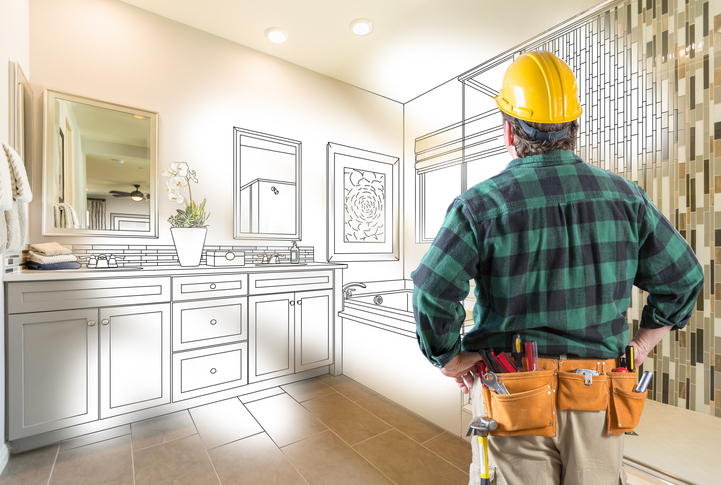 Sometimes, it’s clear as day when a person is the right fit for a particular career. They might have a natural talent, or a perfect personality for the type of work that the career involves. Whatever the case might be, being able to realize this in advance can be a huge advantage, and let a person know that they are on the perfect professional track.
Sometimes, it’s clear as day when a person is the right fit for a particular career. They might have a natural talent, or a perfect personality for the type of work that the career involves. Whatever the case might be, being able to realize this in advance can be a huge advantage, and let a person know that they are on the perfect professional track.
Wondering what kinds of signs exist that can show you that you’re a perfect fit for a career as a home renovation technician? Here’s a look at a few of the best indicators.
1. Having Physical Stamina is a Big Advantage for a Home Renovation Technician
Home renovation is satisfying hands-on work, and a great outlet for people who are able to maintain a steady physical work output over the course of the day. It can, however, be demanding to move supplies around, use tools, and be on your feet all day long.
Having good endurance is a great indication that you’re the kind of individual who is meant for a career in home renovation. If you’re someone who can work hard throughout the day, and do safe, good quality work even when you’ve gotten a little fatigued, you’re exactly the kind of person that employers in the home renovation and construction sector are looking for.
2. Having Great People Skills Can Help You Stand Out in Home Renovation
Being a good people person is a reliable sign that you’re an excellent candidate to become a home renovation technician. Home renovation pros often need to interact with the owner or residents of a building that is being renovated, as well as get along with a group of other workers who might be hot and tired after a long day. If you are someone who is likable, or who can just get along well with others, you could be perfect for this line of work.
Want a little extra insight into the best ways to get along in the workplace? Enroll in a training program at a top institution like North American Trade Schools. Not only can you develop the technical skills that employers will look for, but you can also pick the brains of the experienced faculty about the kinds of behaviour that will help you thrive in a professional environment. Learn from their years of being home renovation workers, and you can walk into your career with a great handle on how to present yourself as a pleasant professional.

3. An Eye for Detail Makes for a Great Home Renovation Technician
To succeed in a career in home renovation, it is essential to be able to produce accurate work. Measurements need to be precise, and cuts made to wood, drywall, or other materials need to be clean and even. The importance of making things measure up correctly and fit together well cannot be overstated in this line of work.

If you’ve got an eye for detail, and live by the philosophy of “measure twice, cut once,” you’re a perfect fit for the construction and home renovation industries. Enrolling in hands-on training can help you translate these natural traits into highly polished, in-demand skills that can land you the rewarding career you want. With training programs typically lasting as little as under a year, you can expect to make quick leaps in your capabilities en route to your new career in home renovation!
Are you convinced that home renovation training is right for you?
Contact North American Trade Schools to learn more about getting started!
